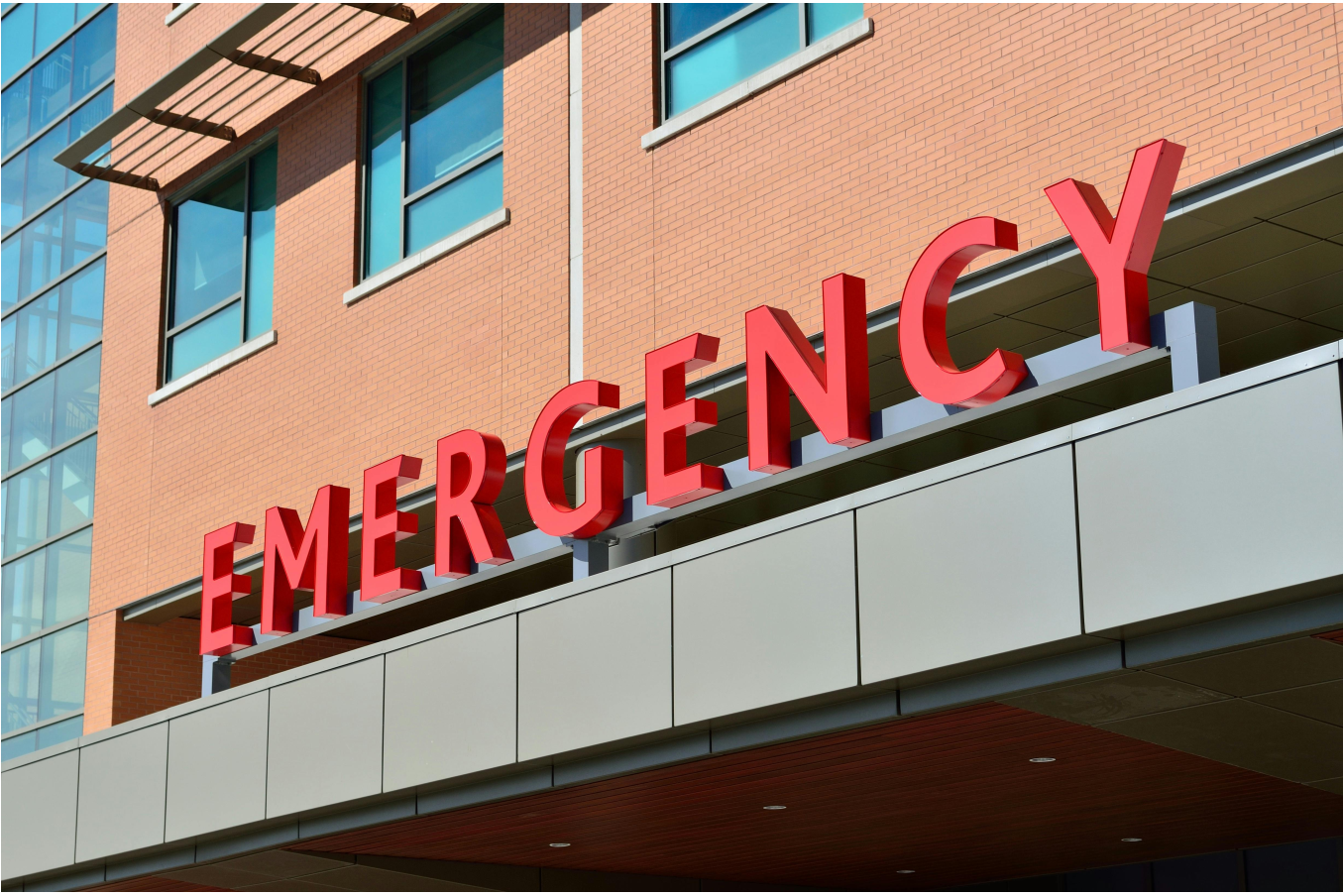What is an overdose?
Overdose occurs when someone takes one or more drugs in a quantity or combination that exceeds what their body can handle. Overdose can happen with many types of drugs, including those used recreationally, bought over-the-counter, or prescribed. This includes everything from alcohol, to Tylenol, to opioids. Some drugs, such as opioids, are central nervous system depressants, meaning that they slow normal functions like breathing and heart rate to the point that they stop altogether. Other drugs such as amphetamines, cocaine, and MDMA (ecstasy) have an opposite effect: they speed up the central nervous system and can increase the risk of heart attack, stroke, or seizure.
Overdoses can have serious consequences, including permanent brain injury or even death.
Who does it affect?
In Canada, overdose deaths are reported differently among provinces and territories, making it difficult to determine the number of Canadians who are hospitalized or die from an overdose.
Despite gaps in the data, we do know that we are currently experiencing an opioid overdose crisis. In 2017, approximately 17 Canadians a day were hospitalized due to opioid poisoning and 3,987 Canadians died from an opioid overdose, although these numbers are likely an underestimation.[1] In 2016, 2,978 Canadians died due to opioid overdoses. The steep increase in the number of deaths is linked to fentanyl and other synthetic opioids that are similar to fentanyl (e.g. carfentanyl) which are being cut into an increasing number of psychoactive drugs on the illegal drug market, without the knowledge of the people who use them. Cocaine, heroin, and MDMA are some examples of drugs that have been contaminated with fentanyl. Even small quantities of fentanyl are deadly: two grains of fentanyl, equivalent in size to two grains of salt, are enough to cause overdose and death.
Drug overdose cuts across all segments of the Canadian population; any person who takes a prescribed drug or who uses a psychoactive substance recreationally is at risk. However, some communities are at an increased risk, including:
- Anyone who uses drugs when alone: The B.C Coroners recently reported that up to 94% of deaths from illegal drugs in January 2018 happened indoors, with 64.8% of that number in people’s own homes.[2]
- Men: Canadian men are more likely than women to use psychoactive substances and develop problems with substance use. In 2016, 73% of all opioid-related deaths occurred among men.[3]
- Youth: Young people may experiment with different substances and engage in riskier substance-use behaviours. They are also more likely to binge drink, which poses a higher risk of toxicity.[4] Where opioids are concerned, youth ages 15 to 24 are one of the groups with the fastest-growing rates of hospitalization for overdoses.[5]
- Seniors: Over the last 10 years, older adults age 45 to 64 and seniors age 65+ had the highest rates of hospitalization due to opioid poisonings.[6] Older Canadians are more likely to be prescribed multiple medications, which increases their risk of overdose from drug interactions.
- Indigenous peoples: Due to the traumas associated with colonialism, residential schooling and systemic racism, some Indigenous communities in Canada report higher incidences of substance use. Despite comprising only about 3.4% of B.C.’s population, First Nations people represented 10% of all overdose deaths in 2016.[7]
- Canadians in correctional facilities: Canadians in or recently discharged from a correctional facility may be at increased risk of overdose. Drugs can and do find their way into Canadian prisons, which may not offer harm reduction programs or provide clean supplies for drug consumption. If someone is abstinent during a period of incarceration, their tolerance for drugs may be lowered. So, if, upon release, they return to consuming at the same rate as they did before incarceration, they are at higher risk of overdose.
- Other populations: Anyone who has a history of substance use problems, is prescribed a high dose of opioids, or takes multiple medications – particularly depressants – are at a higher risk of overdose.
What are the warning signs?
The warning signs for overdose depend on the type of drug consumed.
For opioids and other central nervous system depressants, some of the warning signs include:
- Unresponsiveness or unconsciousness
- Passing out or a “slumped over” posture
- Shallow or irregular breathing, or no breathing at all
- Slowed heart rate or absence of a pulse
- Choking or gurgling sounds
- Purple lips and fingernails
- Clammy skin
- Low body temperature
- Vomiting
- Seizures
- Loss of coordination
For amphetamines and other central nervous system stimulants, some of the warning signs include:
- Tremors and muscle twitches
- Hot, flushed, or sweaty skin
- Headaches
- Chest pain
- Difficulty breathing
- Hostile or violent disposition
- Uncontrolled movements or seizures
- Panic
- Paranoia and other symptoms of psychosis
- Confusion or disorientation
If you suspect someone is having an opioid overdose:
- Shake their shoulders or call their name
- Call 9-1-1 if unresponsive
- Perform chest compressions and rescue breathing
- Administer nasal spray naloxone or injectable naloxone
- If the person resumes breathing, place them in the recovery position
If you suspect someone is having an overdose caused by cocaine, amphetamines, (MDMA) ecstasy or another stimulant:[8]
- Call 9-1-1
- Move the person to a quiet, safe room away from bystanders, noise, excessive light, heat and other stimulation
- If confused or panicking, try to reassure them
- If overheating, try to cool them down by loosening outer clothing or putting a wet towel on the back of their neck or under their arms
- If you can’t get a response or the person is unconscious, put them in the recovery position
- Remove anything from the immediate environment that might cause injury in case muscle spasms or seizures occur
You can help prevent overdoses in your school or workplace. CMHA Ontario developed an opioid overdose prevention toolkit, which can be accessed here: http://ontario.cmha.ca/wp-content/uploads/2018/05/CMHA-Ontario-Reducing-Harms-Updated.pdf.
How can I reduce the risk of overdose?
If you use drugs, whether prescribed or not, or know someone else who uses drugs, carry a naloxone kit with you. Naloxone is a drug that reverses the effects of an opioid poisoning. Naloxone kits are available through pharmacies, health-care workers and some community-based organizations, often at no cost.
Overdose prevention sites (OPS) and supervised consumption sites (SCS) are some of the most effective interventions for reducing the risk of overdose. These sites, which are staffed by health-care professionals and trained peers, are effective because they can offer drug checking services (test strips to check what’s in your drugs) and can respond quickly with naloxone. In B.C.’s 20 overdose prevention sites, there were 66,604 visits between December 2016 and March 2017, and 481 overdoses were reversed, preventing 481 possible deaths.[9] OPSs and SCSs, which also provide sterile injection/consumption equipment and information and referrals to services, also promote access to health-care services and reduce the rates of HIV.[10] Despite the fears that some communities have about OPSs and SCSs in their neighbourhoods, these facilities do not lead to increased crime. In fact, they reduce unsafe consumption practices and syringe disposal and improve public order while also having a positive impact on the health and quality of life of people who use drugs.[11]
We also recommend not using drugs when alone. The risk of fatal poisoning is higher for people who consume illegal substances alone at home, given that they lack a peer or support network that can intervene with naloxone and by calling 9-1-1. Visiting OPSs and SCSs can save your life.
How can I help a loved one?
If you suspect someone close to you might have a substance use problem or may be at risk of an overdose, talk to them. Listen with openness and without judgment. It can be difficult to watch someone you care about experience problems with substances and frightening to think that they can experience an overdose. You may have fears about their safety, or maybe even your own.
If your loved one is actively using drugs or is at risk of an overdose, encourage them to follow harm reduction practices and use harm reduction services. Harm reduction can mean visiting overdose prevention sites, which are supervised by staff and peers who are trained in safer drug consumption practices and how to intervene during an overdose.
If they are using prescribed medications in high doses to manage pain, encourage your loved one to talk to their doctor or health-care professional about alternative therapies. Under some conditions, prescribed medications can be tapered to a lower dose or stopped completely, and pain can be managed with massage, physiotherapy, exercise, counseling, and other therapies.
Although people use drugs for many different reasons, problematic substance use can be a sign of underlying mental health problems and an addiction. Some people use drugs problematically to cope with untreated mental illness, childhood trauma, family difficulties, pain, and other stressors. If your loved one is open to seeking treatment, talk to them or encourage them to speak to their physician or another health-care professional about their treatment options. Remember that change can rarely be forced onto others, and that imposing treatment on someone when they are not ready is not necessarily helpful or in their best interest.
Treatment options for managing problematic substance use include counseling, group therapy, recovery groups (such as 12-step programs), residential treatment (detox), medication, or withdrawal management, among others. Contact your local Canadian Mental Health Association to find out more about available treatment options and encourage your loved one to choose an option that is right for them. Remember that everyone’s needs are different and sometimes a variety of treatments must be tried before the right one is found.
Many people are better able to recover when they have the support and encouragement of friends, family, and peers. Listening, encouraging good communication and healthy habits, being patient, and helping to instill a sense of hope for recovery are only a few ways that you can help support a loved one.
Originally posted by Canadian Mental Health Association










